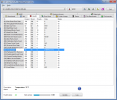iamjohngalt
Member
I had to switch to a backup machine due to a hardware problem this week and on the "new" machine whenever I played back video I noticed a repeating stutter in the video.
This happens when playing from a local video file or when streaming youtube.
Because it is a different motherboard, (although I moved my gpu, soundcard, and other hardware) I had to install different drivers and reinstall hwinfo64.
In an attempt to debug the video issue I looked at the background processes and services and removed some that I didn't actually need.
When I restarted the issue seemed to be resolved until I loaded hwinfo64.
The stutter was back. In fact it appears to repeat as the polling happens in hwinfo64.
Have I inadvertently set something wrong (or forgotten to set something)?
Thanks in advance for assistance with this issue.
This happens when playing from a local video file or when streaming youtube.
Because it is a different motherboard, (although I moved my gpu, soundcard, and other hardware) I had to install different drivers and reinstall hwinfo64.
In an attempt to debug the video issue I looked at the background processes and services and removed some that I didn't actually need.
When I restarted the issue seemed to be resolved until I loaded hwinfo64.
The stutter was back. In fact it appears to repeat as the polling happens in hwinfo64.
Have I inadvertently set something wrong (or forgotten to set something)?
Thanks in advance for assistance with this issue.

